This post is about coppicing cramp bark (Viburnum opulus) for a sustainable supply of young medicinal bark. I have been working with cramp bark for almost 20 years, it is also known as the guelder rose or snowball tree. I wanted to find a way to produce sustainable harvests of this medicinal bark that is widely used as a herbal remedy. This lovely small tree or large shrub has bark with effective antispasmodic properties.
Permaculture and young woodland
In permaculture designs the imitation of young woodland is a notable feature, and coppicing is a clear example of cutting back woody perennials to promote new growth. Coppicing is an ancient art, usually it involves cutting back trees or shrubs almost to the ground, clearing spaces in woodland and enabling young fresh growth to spring up. This results in vigorous production of multiple stems which steadily mature over subsequent years until they are a desired size for harvesting. In the past there has been much evidence of coppicing woodlands for material for fencing, firewood, timber and other purposes. Bark would certainly have been harvested for its tannin-rich effects in processing leather, it was not wasted but lifted off oak trunks and other timbers using a tool known as a 'spud'. In more modern times, however, the wild harvesting of tree barks can be very destructive if a tree is ringbarked. So cultivation with coppicing to produce bark on a cyclical basis can be an attractive alternative. However, I have found little has been written about the possibilities of coppicing for medicinal bark production.
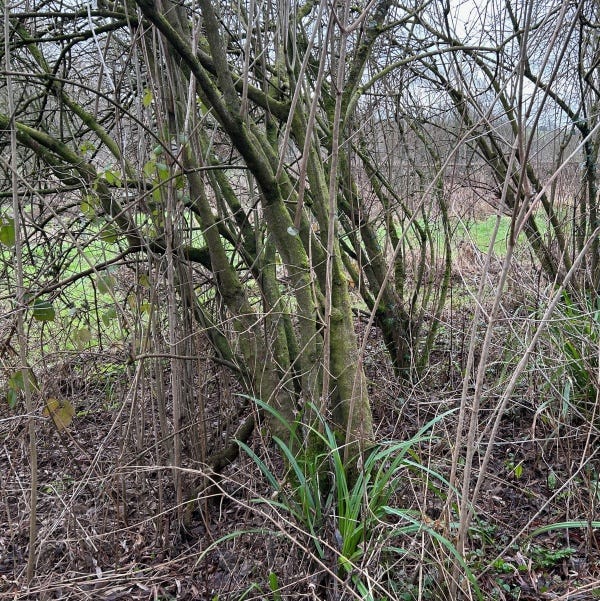
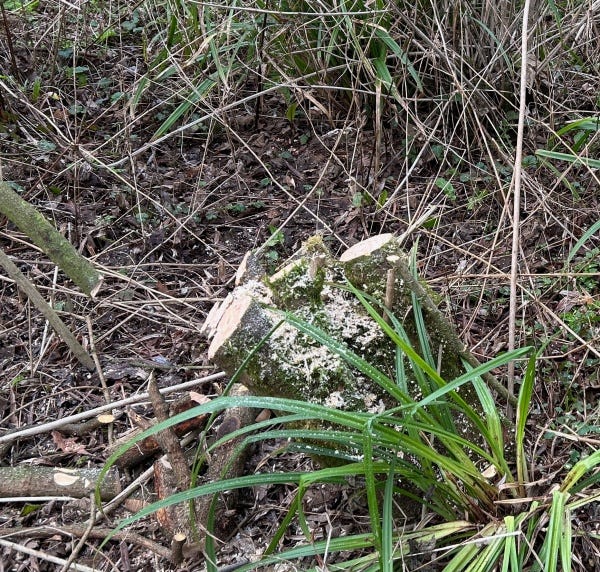
Coppicing for bark
So, I have been trying out a coppicing approach myself to gain bark for healing purposes. It works well with cramp bark. The bark is an effective antispasmodic remedy useful for common complaints such as menstrual cramps and muscular pain. Cramp bark is perhaps better known as the guelder rose or snowball tree. It is quite widely available in varieties that are sold for ornamental effect, producing large pom-poms of white flowers with leaves that turn red or yellow in autumn. The original species has flattish white flower heads leading to shining red fruits early autumn. It is found in hedgerows, woodlands, fens and scrubland throughout most of Europe and north and west Asia. In autumn this shrub can be spectacular with reddish leaf colour and heavy boughs of fruit clusters. The fruit is so unpleasant tasting that it is mostly left by birds and can stay on the tree for a long time.
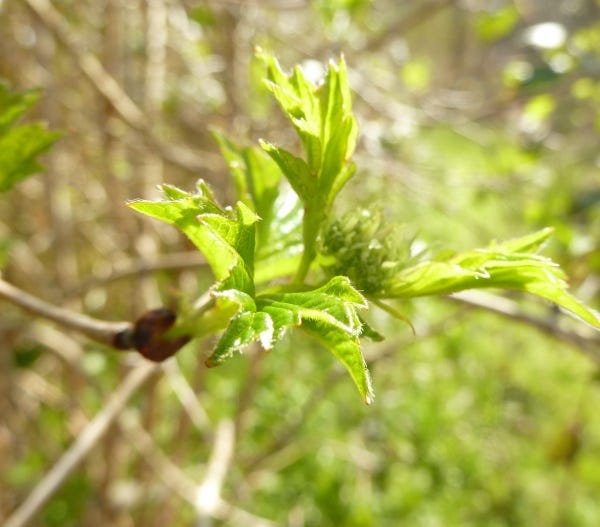

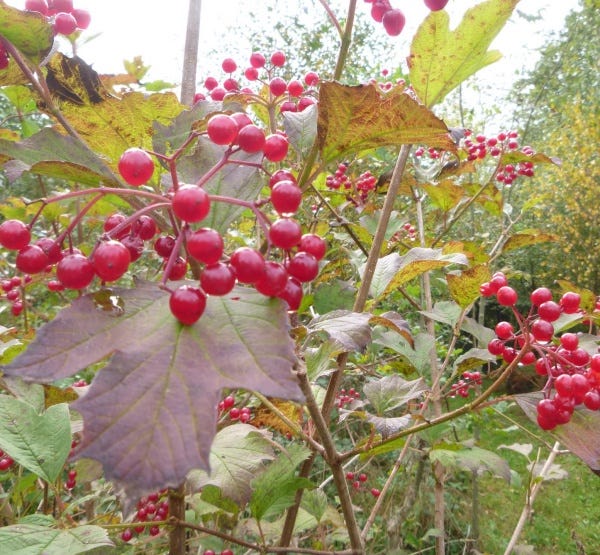
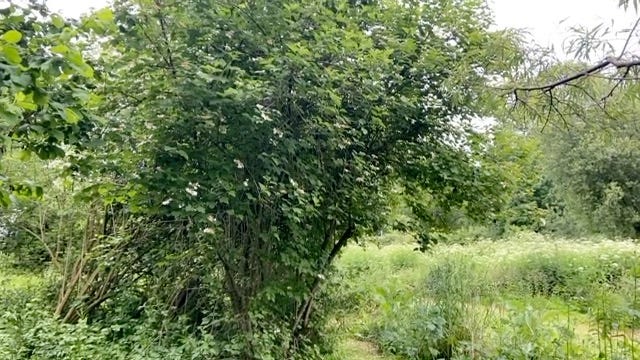
Something had to be done about the dank copse
Back in 2005 some cramp bark shrubs were planted at Sandford Millennium Green as part of the original Herb and Forest Garden design. They grew unhindered until about 2020 when I started to help refurbish the planting. By this time the five or so shrubs were very well-established, reaching over 4 m high with dense branching thick woody stems. The bark of these branches had become tough and unusable. Although these large shrubs gave a stunning autumn display of colourful fruit and leaves each year they were soon crowding each other out and forming a dank copse below, and no other plants were growing under the dense shade. Something had to be done! I had in mind that a cyclical approach to coppicing would be a way to refresh the copse and establish a continuous supply of cramp bark. A bonus would be the growth of additional plants in gaps opened by coppicing, including comfrey, another plant noted for its healing uses.
How coppicing is done
Ideally, coppicing is carried out in the winter months. During this time the plants have shut down so that cutting does not cause a damaging loss of rising sap. In the cold weather the plant can start to replenish the lost material by growing out epicormic buds (just under the skin). The stimulation of growth is enabled by the removal of the suppressing effect of the leaves and branches above. To avoid damage to the cut stems it is important to use a sharp saw and make a clean slightly sloping cut. For the larger stems I used a cordless Stihl chainsaw with a 30 cm (12 inch) blade. This is a handy tool with a rechargeable battery, a bit like an oversized carving knife, and it makes the job so much easier. ** SAFETY NOTE Chain saws can be dangerous and must be well-maintained and used with suitable protective gear.** Alternatively, a manual sharp tree saw works well for the smaller branches. If the plants are well grown, then a little planning is needed beforehand to clear the cut branches. There is a surprising amount of woody material on overgrown trees! The way that the Viburnum species grow is rather craggy, producing plenty of awkward twiggy branches that are not ideal for putting into a chipper. Fortunately, there is enough space at the Sandford Millennium Green and I was able to pile up branches nearby. Care was needed not to leave felled branch ends too close to damp ground as they can readily sprout a few roots. Some of these craggy upper branches were ideal for protecting other more vulnerable plants by making a pile over them. The branches with thick stems were trimmed to make poles ideal for lining paths. The rest went in a pile for later use.

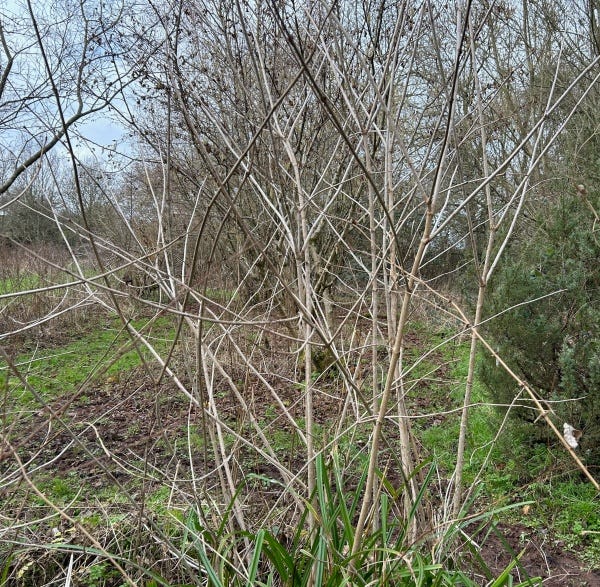
Making a circular coppice bed
After several hours of effort - the cutting is the easy part as chopping up heavy branches and dragging them to various piles takes longer - I was pleased with the results. In a roughly circular bed of about 6 m diameter, there are five established bushes at various stages, now in a coppicing cycle of around 5 years.
(1) Freshly cut coppice stool with no stems
(2) Coppice cut last year and throwing up new and young stems
(3) Coppice stems several years old and ideal for harvesting for bark
(4) Branching coppice with more than a few years growth and needing to be cut again
Now that I have opened up the area to light it is likely that all of the coppiced cramp bark stumps will grow more strongly. Aside from the benefit of more light and space for herbaceous plants below, there are several neighbouring beds that will also gain more light. I had left this job undone for too many years and the trees were very overgrown.
This time around I had to stop and leave a couple of high branches that were so overgrown they had entwined with a neighbouring shrub. Every tug on these branches shook up a birds nest so it was not safe to continue. But now that I have begun a regular coppicing cycle over 4-5 years, the process will become easier each year. You can check the video below to see examples of well grown cramp bark trees and various stages of coppicing. You can see fresh cut coppice stump and young stems which are starting to form bark. Ideally there are enough plants here to provide a continuous harvest each year.
Continuous coppistry: the art of sustainable medicinal tree growing
I like to think of this coppicing technique as ‘coppistry’, a kind of creative experimentation using natural regeneration. It is evident that continuous coppicing was carried out in the past with abundant harvests and prolongation of the life of trees and shrubs. Today, we can explore the use of the technique of coppicing for harvests of medicinal tree bark. We should develop this technique as an art! Look out for my follow-on post where I will explain more about ways that cramp bark can be stored and used.





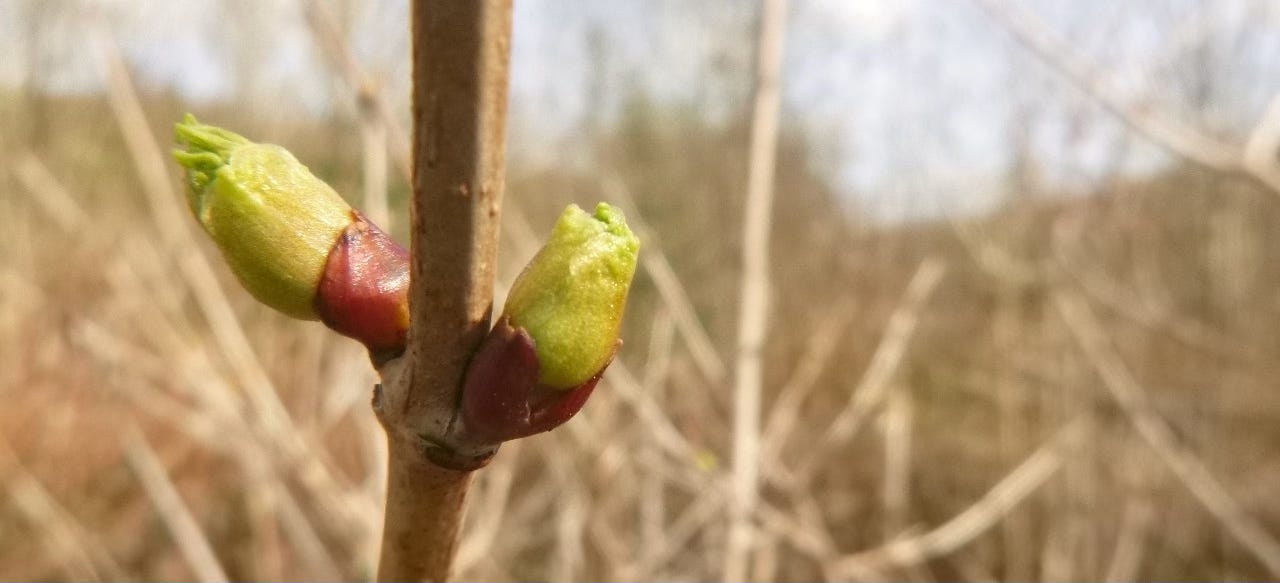
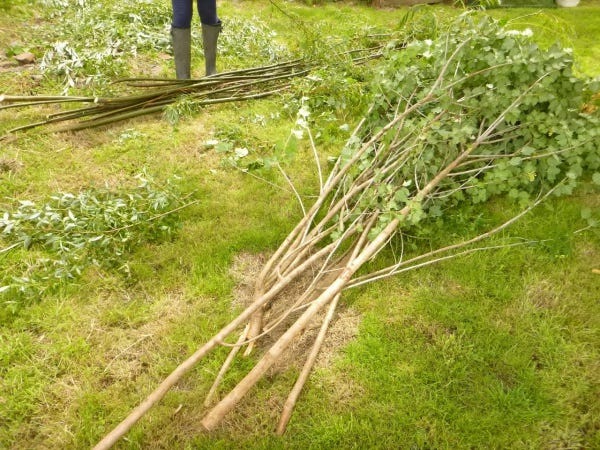

Good to hear Sylvia, and for info, apart from suggestions in my book 'Trees And Shrubs That Heal', here is a list I added to the Permies website last year after a discussion on coppicing and pollarding.
- blackcurrant for leaf
- cherry for bark
- hawthorn for flowers, leaf and berries
- mimosa for flower and bark
- poplar/aspen for buds
- rosemary for leaf and flower
- sea buckthorn leaf and berries
- slippery elm for bark
- sweet chestnut for leaf
Anne, thanks so much for the post. I'm identifying trees to coppice and pollard as I walk our farm. This helps my thinking.